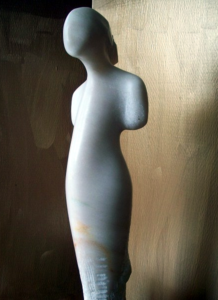Transcutaneous Vagal Nerve Stimulation (RAVANS) fMRI in Migraineurs
Kristen Sparrow • April 04, 2017


I have been exploring Transcutaneous Vagal Nerve Stimulation (tVNS) by way of auricular cymba concha stimulation as an adjunct to acupuncture treatment for over two years. This article by friend of blog Vitaly Napadow, looks at TVNS in migraineurs. They up the ante a bit by synchronizing the stimulation (30hz, non-painful stimulation) with exhalation. This method is called Respiratory-gated auricular vagal afferent nerve stimulation (RAVANS). They found that RAVANS gave more of an intervention effect than sham. See conclusion below.
“During RAVANS, NTS connectivity was found to a network of brain regions, including anterior insula, putamen, midbrain, and thalamus. A significant INTERVENTION effect (RAVANS > sham) was found for NTS connectivity to left and right anterior insula, and putamen. Furthermore, pontine raphe response to airpuff stimulation to V1 territory was greater following RAVANS, but not SHAM. RAVANS effectively activates ipsilateral NTS. Regulation of NTS connectivity to known pain-modulatory brain regions, and increased sensory processing in raphe nuclei, may constitute an underlying analgesic mechanism.”
This is an aspect of clinical studies that has not been effectively addressed in that grouping patients all together, you get an overall effect, but it doesn’t account for the profound differences between patients. Obviously, this is the current standard for clinical studies and I’m not arguing with it, but I am interested in trying to improve outcomes by categorizing patients for improved outcomes. This would improve and accelerate our clinical results and lead to more decisive study results.
With that in mind, I would add that I have not found ear tVNS to be universally efficacious. Even if the patient reports no untoward effects, there can be a spike in stress levels (LF/HF) with tVNS especially in migraineurs. It is possible that a LF/HF spike is not necessarily clinically detrimental, it is a risk I’m unwilling to take.

